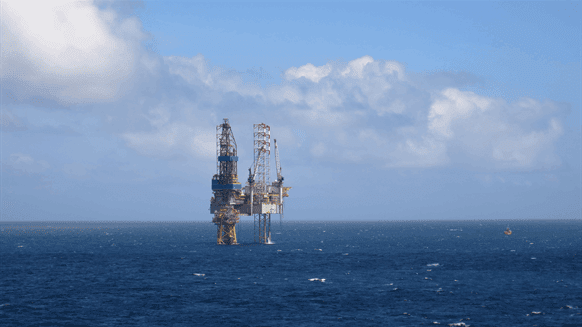Equinor ASA is selling 19.5 percent interests in production licenses PL 1201 and PL 048E, which contains the Eirin field, to PGNiG Upstream Norway AS.
The closing of the transaction is conditional upon ministry approval. The effective date of the transaction is January 1, and its financial details were not disclosed.
After the transaction, the ownership of the two companies “will be balanced with the Gina Krog field,” Equinor said in a news release.
Eirin is a gas field located 155 miles (250 kilometers) west of Stavanger. The field was proven in 1978 and is located at a depth of about 13,123 feet (4000 meters). Water depth at the field is about 393.7 feet (120 meters).
The volumes from Eirin are received at Gina Krog and sent on for further processing. Condensates from the Eirin gas will be exported to Sleipner A via a new oil pipeline from Gina Krog to Sleipner A, which is under construction. The rich gas will be transported by pipeline to the Sleipner A facility for further processing. Sales gas is exported from the Sleipner A facility via Gassled to the market, while unstabilized condensate is exported to the terminal at Kårstø, according to the release.
“Balanced partnerships will make it easier to coordinate decisions in the licenses to optimize production and enhance value creation from the area,” Camilla Salthe, Equinor’s senior vice president for late-life fields, said. “Together with the electrification of the platform, the Eirin development will extend the lifetime of the Gina Krog field, which supplies gas to Europe with low emissions from production and transport”.
The plan for development and operation (PDO) for Eirin was approved in January, and the field will be developed as a subsea facility tied back to the Gina Krog platform. The subsea template is under construction in Egersund and is scheduled for installation in the summer of 2024, according to the release.
Production license PL 1201 was awarded at this year’s Awards in Predefined Areas (APA). Any discoveries in this license will be able to make use of Eirin’s infrastructure and be tied back to the Gina Krog platform, the company said.
Equinor noted that the field will be developed as a subsea facility that will be adapted and prepared as a tie-in point for future discoveries in the area that can be expanded with new wells. The development concept is a subsea template tied back to Gina Krog by a production pipeline and umbilical cable.
With the electrification of Gina Krog and partial electrification of Sleipner, production from Eirin and Gina Krog will have low emissions from production of three kilograms of carbon dioxide (CO2) per barrel of oil equivalent, Equinor said.
In April, Equinor began the electrification of the Sleipner field center in a bid to cut CO2 emissions. The Sleipner field center, along with the Gudrun platform and other associated fields, is now partly operating on power from onshore, which will reduce annual CO2 emissions from the Norwegian continental shelf (NCS) by 160,000 metric tons, Equinor said in an earlier news release. The total project investment cost was $100 million (NOK 1.08 billion).
PGNiG Upstream Norway AS is a subsidiary of the Orlen Group.
Source: www.rigzone.com





